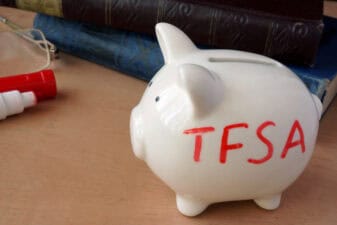To be clear, Alimentation Couche-Tard (TSX:ATD) and Parkland (TSX:PKI) are related companies, but they’re not directly comparable because of the different business mix. Although both have convenience stores and gas stations, you’ll notice that Couche-Tard is categorized as a specialty retailer, while Parkland is categorized as an oil and gas refining and marketing company. So, the former falls under the consumer discretionary sector, while the latter falls under the energy sector.
2019 is viewed as the normalized year, so I’ll use that year as the base year for comparing their balance sheets.
Parkland’s balance sheet
Some investors may be worried about Parkland’s S&P credit rating of BB, which is below the investment-grade rating of BBB-.
At the end of 2019,
- Current assets were 23.7% of total assets;
- Net property, plant, and equipment assets (“PP&E”) were 40.4% of total assets;
- Other assets were 35.9% of total assets;
- Current liabilities were 20.4% of total liabilities and stockholders’ equity;
- Long-term liabilities were 75.1% of total liabilities and stockholders’ equity; and
- Retained earnings were 0.6% of total liabilities and stockholders’ equity.
At the end of 2021, the percentages following the above order were as follows:
- Current assets: 27.1%
- Net PP&E: 38.3%
- Other assets: 34.6%
- Current liabilities: 19.5%
- Long-term liabilities: 79.8%
- Retained deficit: $142 million
Parkland increased its percentage of liabilities from 95.5% to 99.3%. So, it’s even more reliant on debt to fund its assets. Its 2021 interest expense was lower than in 2019, but its high debt levels could be concerning in today’s rising interest rate environment. Its weighted average interest rate of approximately 3.2% hasn’t changed much, though. This interest rate doesn’t seem too bad given the company’s high debt levels. However, it would be more reassuring to see retained earnings (that’s preferably growing) instead of a deficit.
Couche-Tard’s balance sheet
Couche-Tard doesn’t have a high-debt problem. It has an investment-grade S&P credit rating of BBB. Its total liabilities to total liabilities and stockholders’ equity dropped to 56.2% in the latest quarterly report versus 59.4% in 2019. Its retained earnings also increased by 41% to $12.8 billion since 2019.
Valuation, dividends, and total returns
Couche-Tard’s earnings and cash flow have simply been more sustainable and persistently growing, whereas Parkland’s come with greater volatility. Therefore, it isn’t surprising that the market demands a lower valuation and higher dividend yield from Parkland versus Couche-Tard at this time.
Specifically, Parkland yields 3.9% at $31.32 per share at writing. It has increased its dividend for nine consecutive years. According to Yahoo Finance, the consensus 12-month price target across 14 analysts suggests the dividend stock is discounted by 37%. This also means it has near-term upside potential of 58%. So, the stock is attractive after correcting 26% from the peak of 2021.
Couche-Tard stock has held up much better and has hiked its dividend for 12 consecutive years. At $48.27 per share at writing, it yields 0.9%. According to Yahoo Finance, the consensus 12-month price target across 15 analysts implies the growth stock is discounted by 17%. This also means it has near-term upside potential of roughly 21%. So, the quality stock is beginning to look compelling after dipping 12% from its peak earlier this year.
Couche-Tard is a lower-risk business that provides decent total returns potential. However, Parkland stock buyers today are well compensated with a much bigger discount and dividend. Therefore, it’s up to individual investors on which they choose to buy based on their risk tolerance.








